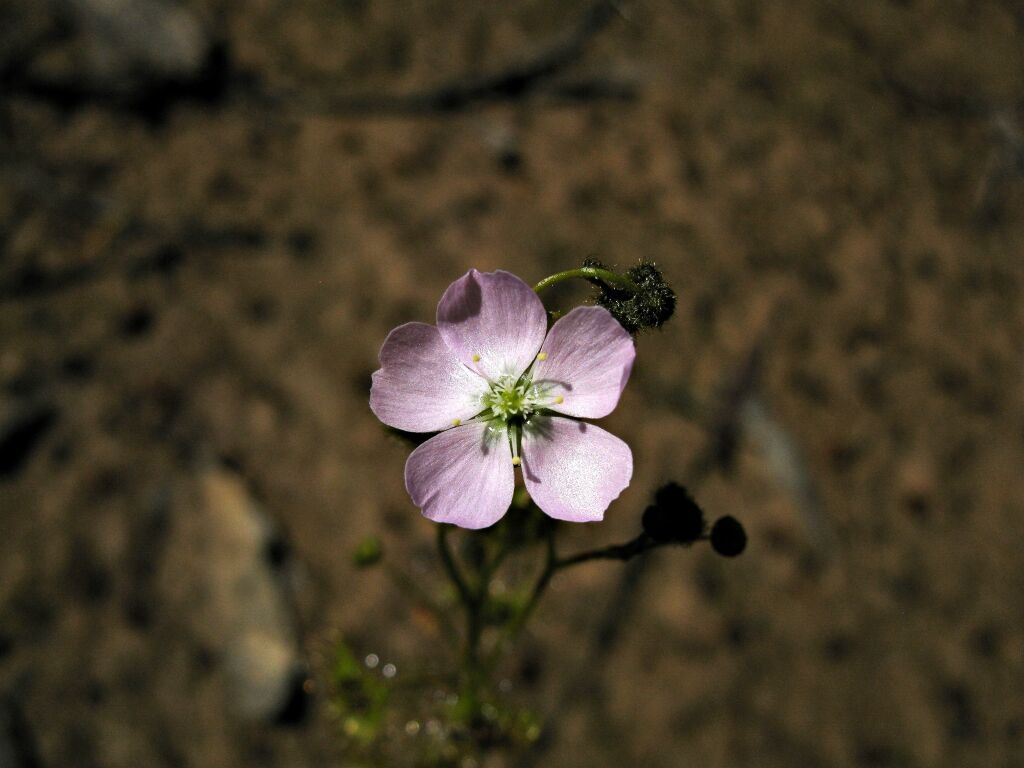Drosera hookeri
R.P.Gibson, B.J.Conn & ConranTuber ovoid. Stem erect, usually simple, sometimes branched, 2.5–25–(38) cm long, glabrous. Leaves in basal rosette and cauline; basal leaves appressed to the soil, often reduced, not peltate, petiole 3–17 mm long, lamina elliptic to reniform or hatchet-shaped with 2–11 mm diam.; cauline leaves 4–20 mm long, peltate, distally often in groups of 2–6, petiole 3–17 mm long, spreading or re-curved, glabrous, lamina suborbicular, lunate, (2–)4–10 mm diam.; stipules absent. Inflorescence terminal or subterminal, usually a one-sided raceme, 1–10-flowered; bracts narrowly ovate or ovate, c. 1mm long; pedicels 4–15 mm long; sepals 5, ovate, elliptic or obovate, 2–5 mm long, moderate to densely pubescent, rarely glabrous except for the ciliate margins, apex usually acute; petals 5, obovate, 3–7 mm long, white or pink, margins entire, emarginate or, rarely, fimbriate; styles 3, each 0.3–1.2 mm long, the upper half of each divided digitately several times. Seeds cylindrical to obovoid, 0.5–0.8 mm long deeply reticulate or pitted. Flowers Aug.–Nov.(–Jan.).
LoM, MuM, Wim, GleP, VVP, VRiv, MuF, GipP, OtP, WaP, Gold, CVU, GGr, DunT, NIS, EGL, EGU, HSF, HNF. Also SA, NSW, Tas. Occurs in heathland, wet depressions in Eucalyptus camaldulensis woodland, and moist gullies in forested areas.
This species has previously been included in Drosera peltata. It can be distinguished from D. peltata by the basal rosette remaining greenish, short and generally more robust stems, wider cauline leaves, and seeds that are more deeply reticulate or pitted. Furthermore flowers of D. hookeri may be white or pink, and sepals are sometimes less hairy, with hairs only along margins. Most Victorian records of D. peltata have been shown to belong to D. hookeri, with true D. peltata being confined to wet peaty soils of alps and lowland heaths.
Unusually robust plants with stems over 30 cm high have been reported from the Grampians (Gibson et al. 2012).
 Spinning
SpinningGibson, R.; Conn, B.J.; Bruhl, J.J. (2012). Morphological evaluation of the Drosera peltata complex (Droseraceae). Austral. Syst. Bot. 25: 49–80.


